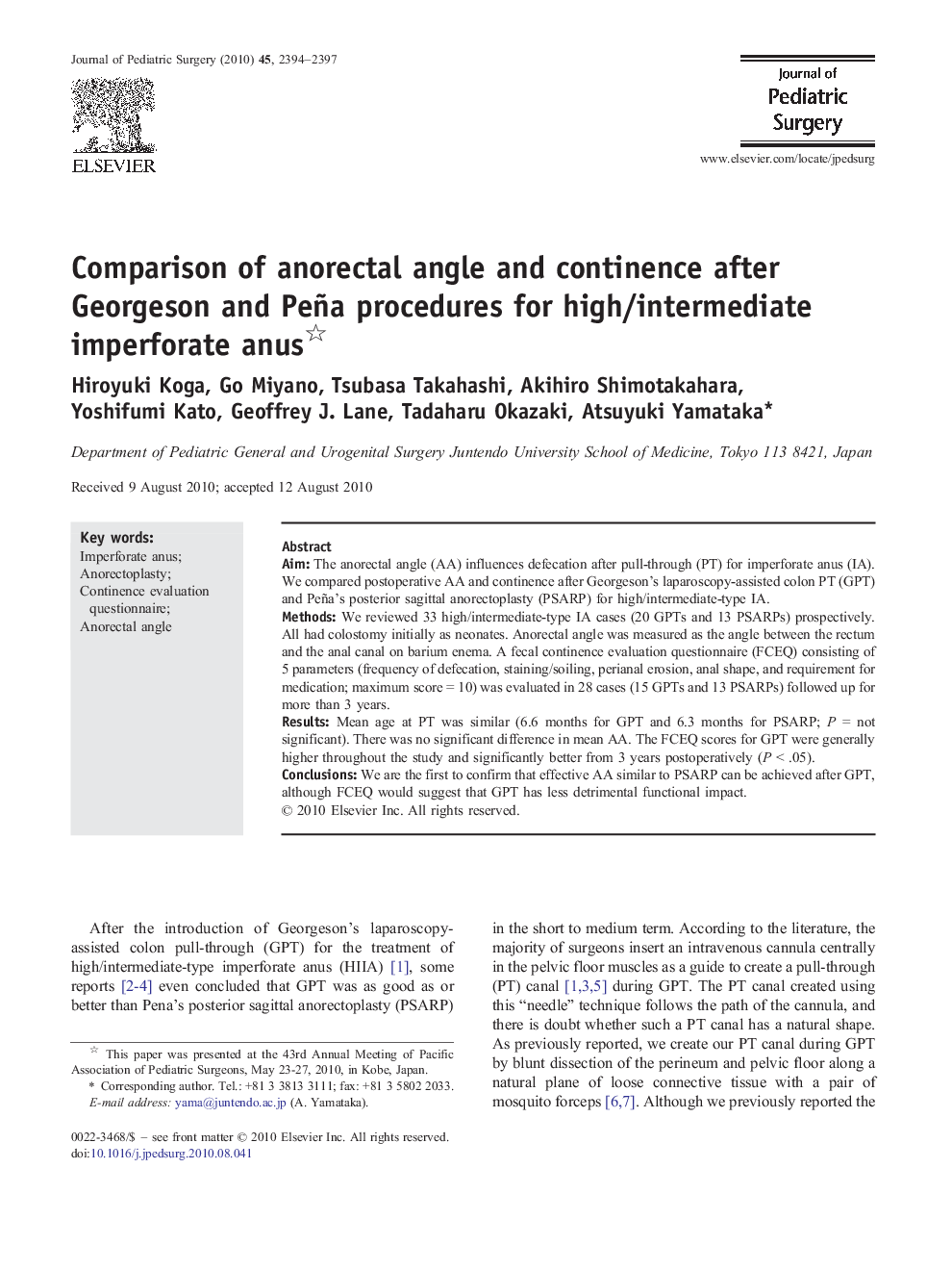| Article ID | Journal | Published Year | Pages | File Type |
|---|---|---|---|---|
| 4157631 | Journal of Pediatric Surgery | 2010 | 4 Pages |
AimThe anorectal angle (AA) influences defecation after pull-through (PT) for imperforate anus (IA). We compared postoperative AA and continence after Georgeson's laparoscopy-assisted colon PT (GPT) and Peña's posterior sagittal anorectoplasty (PSARP) for high/intermediate-type IA.MethodsWe reviewed 33 high/intermediate-type IA cases (20 GPTs and 13 PSARPs) prospectively. All had colostomy initially as neonates. Anorectal angle was measured as the angle between the rectum and the anal canal on barium enema. A fecal continence evaluation questionnaire (FCEQ) consisting of 5 parameters (frequency of defecation, staining/soiling, perianal erosion, anal shape, and requirement for medication; maximum score = 10) was evaluated in 28 cases (15 GPTs and 13 PSARPs) followed up for more than 3 years.ResultsMean age at PT was similar (6.6 months for GPT and 6.3 months for PSARP; P = not significant). There was no significant difference in mean AA. The FCEQ scores for GPT were generally higher throughout the study and significantly better from 3 years postoperatively (P < .05).ConclusionsWe are the first to confirm that effective AA similar to PSARP can be achieved after GPT, although FCEQ would suggest that GPT has less detrimental functional impact.
